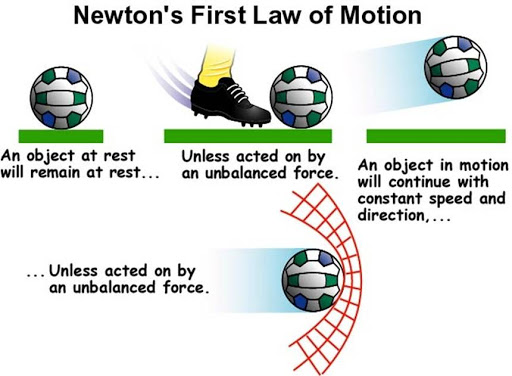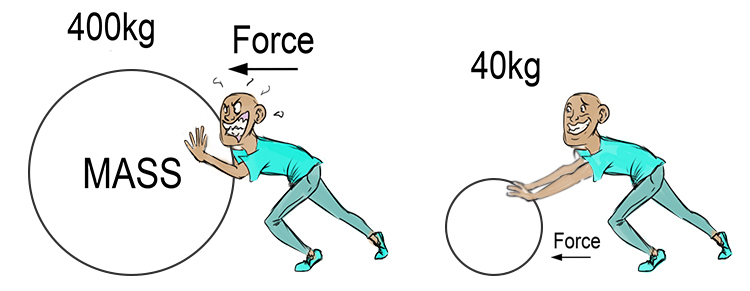Term 2 - Week 2
Section outline
-
Success Criteria:
1) Describe Newton's Three Laws of Motion
2) Explain examples of Newton's Three Laws
Newton's First Law
- An object will remain at rest or in a constant motion, until a force acts upon it.
Think of a tug of war. The rope stays at rest and moves based on which side has pulled with more force.
For example, a football won't move unless it is kicked.

You look at calculating the NET FORCE by adding up the forces involved. The net force will indicate which direction the object will move. The direction of the force is drawn with arrows. In the example below, the player in blue kicks the ball to the right with 75 N of force and the player in yellow kicks it with 125N to the left. To calculate net force: 75N + (-125 N) = -50 N ... that means the ball will travel to the 50 N to the left. *Note: the 125 N was written as a negative to show it is in the opposite direction.
There are different types of forces to consider:
A force is a push, pull, or twist that can cause an object to speed up/down, change their direction or change their shape.
Types include: Magnetic, Air resistance, friction, upthrust, Gravity, electrostatic, etc. etc.
Activities
1) Review the Exploring Forces document so you are familiar with the different types of forces.
2) Calculate net forces activity sheet (practicing calculations)
Newton's Second Law
- The force acting on an object depends on its mass AND acceleration. (note: it is easier ie. less force required, to push a light object than a heavy one)

Activities:
1) Marshmallow blaster is assigned in Education Perfect. You can improvise if you do not have tape. Use elastic bands to keep the shape of the smaller inner tube. You can cover one end with tinfoil instead of tape. If you do not have a ruler, take a piece of string and use an online ruler to measure how long it is. Use the string the same way you would use a meter ruler.
You can use the provided template in Ed Perfect or write up your own, similar to what you do in science class. Please upload your work by early next week to Google Classroom.
How we can calculate difference forces (will look at in more detail next week):
Force of gravity = mass * gravity
Force = mass * acceleration
UNITS:
- Force is in Newtons
- mass is in kilograms (check for converting units from grams)
- Gravity is in Newtons per kilogram
- acceleration is m/s2 (meters per second squared)
FOCUS / ARONGA learning intentions:
- We are FOCUSING...transforming our lab reports from a basic report to an NCEA lab report
- We are FOCUSING...on describing and discussing collected scientific data
-
You can focus your attention on the first page of this document. See if you can work up to the second and third pages.
-
Try to bring the two together (identifying forces) and calculating the net force, using this document.
